|
In 1661, The young Shun Chih Emperor caught smallpox and passed
away. His third son, Hsuan Yeh The coinage of the K'ang
Hsi series is very interesting. Have you heard about the K'ang
Hsi Ch'ien Shih |
| Home Page | New Data | Chronology | Cast Coins | Struck Coins | Paper Money | Links/Reference |
|
In 1661, The young Shun Chih Emperor caught smallpox and passed
away. His third son, Hsuan Yeh The coinage of the K'ang
Hsi series is very interesting. Have you heard about the K'ang
Hsi Ch'ien Shih |
|
T'ung |
Fu |
Lin |
Tung |
Chiang, |
|
Hsuan |
Yuan |
Su |
Chi |
Ch'ang, |
|
Nan |
Ho |
Ning |
Kuang |
Che, |
|
T'ai |
Kuei |
Shen |
Yun |
Chang. |
| Obverse | Reverse | Description |
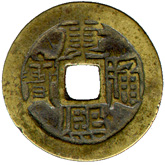
|
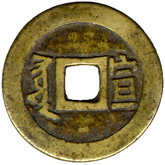
|
No. 0051 |
| Mint: Chihli | ||
| Diam. 27 mm | ||
| Wt. 3.7 g. | ||
| Rareness E | ||
| Mint Evolution and Peculiarity | ||
|
The Hsuan Hua Mint was first established at Chihli in 1645 for
the minting of the Shun Chih T'ung Pao cash coins, each weighting
1.2 mace [ 1 mace = 1/10 tael = 3.73 gram.
Some sources suggested that though the order to cast might have
been issued in 1645, Hsuan Hua Mint was not able to start before
1646AD ] with the "Hsuan" In 1653, it also cast coins bearing with Chinese characters I Li |
||
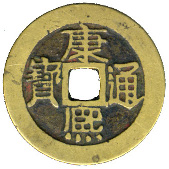
|
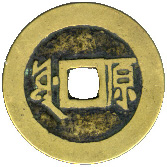
|
No. 0052 |
| Mint: Shansi | ||
| Diam. 27 mm | ||
| Wt. 5.2 g. | ||
| Rareness E | ||
| Mint Evolution and Peculiarity | ||
|
This coin was cast by the Taiyuan mint of Shansi province with
the "Yuan" mint marks written in both Manchu and Han
script |
||
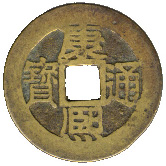
|
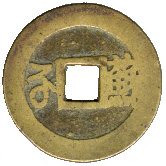
|
No. 0053 |
| Mint: Kiangsu | ||
| Diam. 26.5 mm | ||
| Wt. 4.1 g. | ||
| Rareness D | ||
| Mint Evolution and Peculiarity | ||
|
This K'ang Hsi T'ung Pao was cast by Soochow mint of Kiangsu
province. On the reverse are the "Su" mint marks in
both Manchu and Han scripts |
||
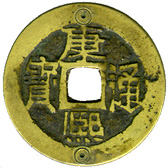
|
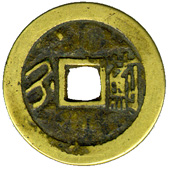
|
No. 0054 |
| Mint: Chihli | ||
| Diam. 27.5 mm | ||
| Wt. 4.4 g. | ||
| Rareness D | ||
| Mint Evolution and Peculiarity | ||
|
Chichow Mint was another mint in Chihli province. The mint was
first established in the 2nd year of Shun Chih reign (1645AD).
On the reverse are mint marks "Chi" in both Manchu
script and Han script |
||
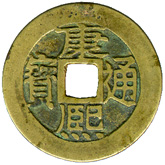
|
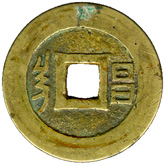
|
No. 0055 |
| Mint: Kiangsi | ||
| Diam. 27 mm | ||
| Wt. 3.8 g. | ||
| Rareness E | ||
| Mint Evolution and Peculiarity | ||
|
The Kiangsi province had been a very famous
casting center in the history of the Chinese coinage since Shang
dynasty. During Qing dynasty, Nanchang Mint was first established
in 4th year of the Shun Chih reign (1647AD). In 1667, Nanchang
Mint began to cash K'ang Hsi T'ung Pao bearing with "Ch'ang"
mint marks in both Han script According to the book of Jiangxi Lidai Qianbitulu by Mr. Lung Chi Ch'ang, Mr. Lung found that the diameters of K'ang Hsi Nanchang copper cash are from 27.6mm to 22.2mm, weight from 5 grams to 2 grams amount his huge collections of K'ang Hsi coin. |
||
Bibliography
| Home Page | New Data | Chronology | Cast Coins | Struck Coins | Paper Money | Links/Reference |